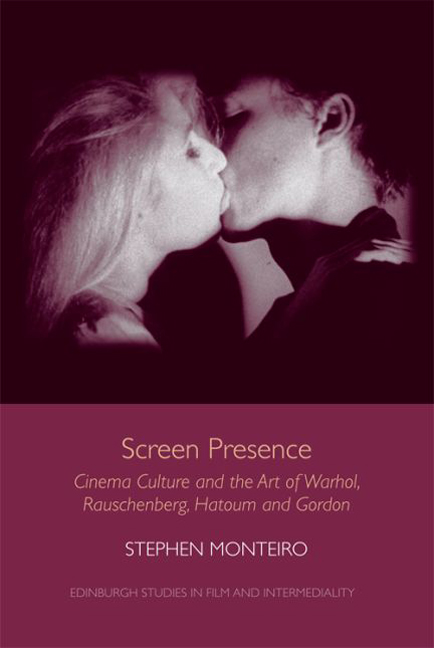Book contents
- Frontmatter
- Contents
- List of Figures
- Acknowledgements
- Introduction: Cinema's Grey Spaces
- 1 A Wider Audience: Robert Rauschenberg, the White Paintings and CinemaScope
- 2 The Screen Scene: Andy Warhol, the Factory and Home Movies
- 3 Private Dis-Pleasures: Mona Hatoum, Mediated Bodies and the Peep Show
- 4 A Monument in Ruins: Douglas Gordon, Screen Archaeology and the Drive-in
- Conclusion
- Index
4 - A Monument in Ruins: Douglas Gordon, Screen Archaeology and the Drive-in
Published online by Cambridge University Press: 15 September 2017
- Frontmatter
- Contents
- List of Figures
- Acknowledgements
- Introduction: Cinema's Grey Spaces
- 1 A Wider Audience: Robert Rauschenberg, the White Paintings and CinemaScope
- 2 The Screen Scene: Andy Warhol, the Factory and Home Movies
- 3 Private Dis-Pleasures: Mona Hatoum, Mediated Bodies and the Peep Show
- 4 A Monument in Ruins: Douglas Gordon, Screen Archaeology and the Drive-in
- Conclusion
- Index
Summary
In a bare patch of the Mojave Desert in the Bullion Mountains of California, 150 miles east of Los Angeles near the town of Twentynine Palms, a white screen rose under the late-summer sun in September 2001. Like a whitewashed billboard, or the abandoned screen tower of a drive-in movie theatre, this uncanny structure evoked the neglected remains of modern culture, caught between interstate freeways and networks of new routes in the recently declared digital ‘superhighway’ of the World Wide Web. As the sun set on the desert, an image began to emerge across the surface of this mute, material testimony to the voracious speed of contemporary consumerism and technological obsolescence. The image slowly filled the screen's empty spaces like a photographic print bathed in developer (Figure 4.1). It would reveal cowboys on horseback fording a river, or a family gathering for dinner in their rough-hewn cabin, or the iconic eroded buttes of Monument Valley lying 500 miles to the northeast. The image hovered, silent and still, its glowing Technicolor hues contrasting sharply with the scoured sand and brush of the desert. Its changes were imperceptibly slow, even when compared with the quiet surroundings, lingering like a memory, present but incomplete. A passer-by or spectator might set about piecing together the image's narrative from the mind's palimpsest of innumerable Hollywood westerns seen in theatres and on late-night TV. In its nearly geological pacing, however, the evolving image would resist the particulars of its filmic past to appear as immobile and seemingly ‘dead’ as the desert landscape that was simultaneously represented within its frame and stretching in all directions around the screen. In this moment the cinematic ‘monuments’ of America's geological wonders, the near-motionless images of John Ford's monumental western The Searchers, and the cinema apparatus itself all converged in an event that embedded cinema within trans-historical and natural processes, as though it were a fossil or ruin. This event was 5 Year Drive-By, a projection-installation by Douglas Gordon that had taken about as long to create as it would take the film to play out if it had stood in the desert for the duration prescribed by the work's title.
- Type
- Chapter
- Information
- Screen PresenceCinema Culture and the Art of Warhol, Rauschenberg, Hatoum and Gordon, pp. 144 - 180Publisher: Edinburgh University PressPrint publication year: 2016



